

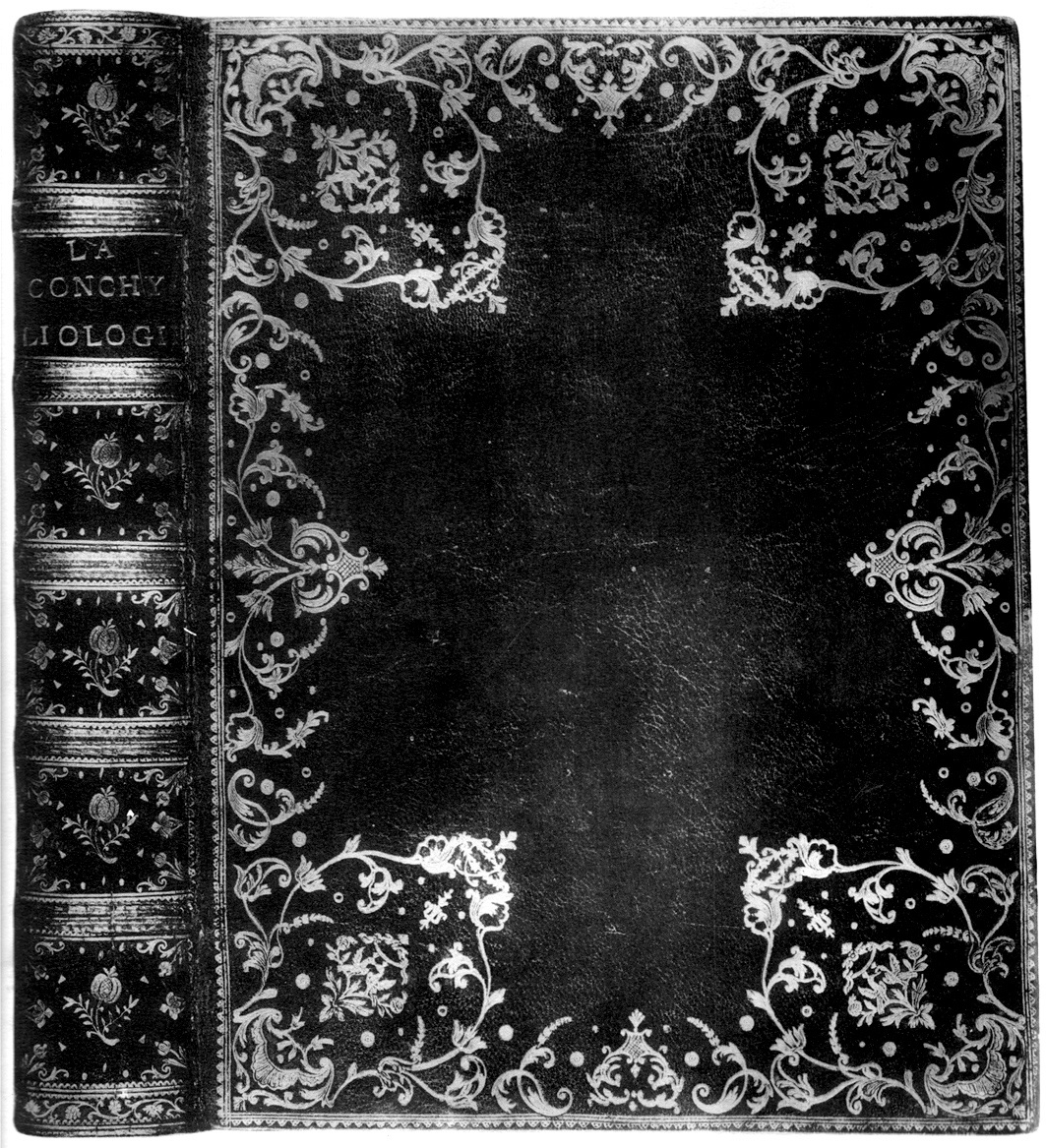
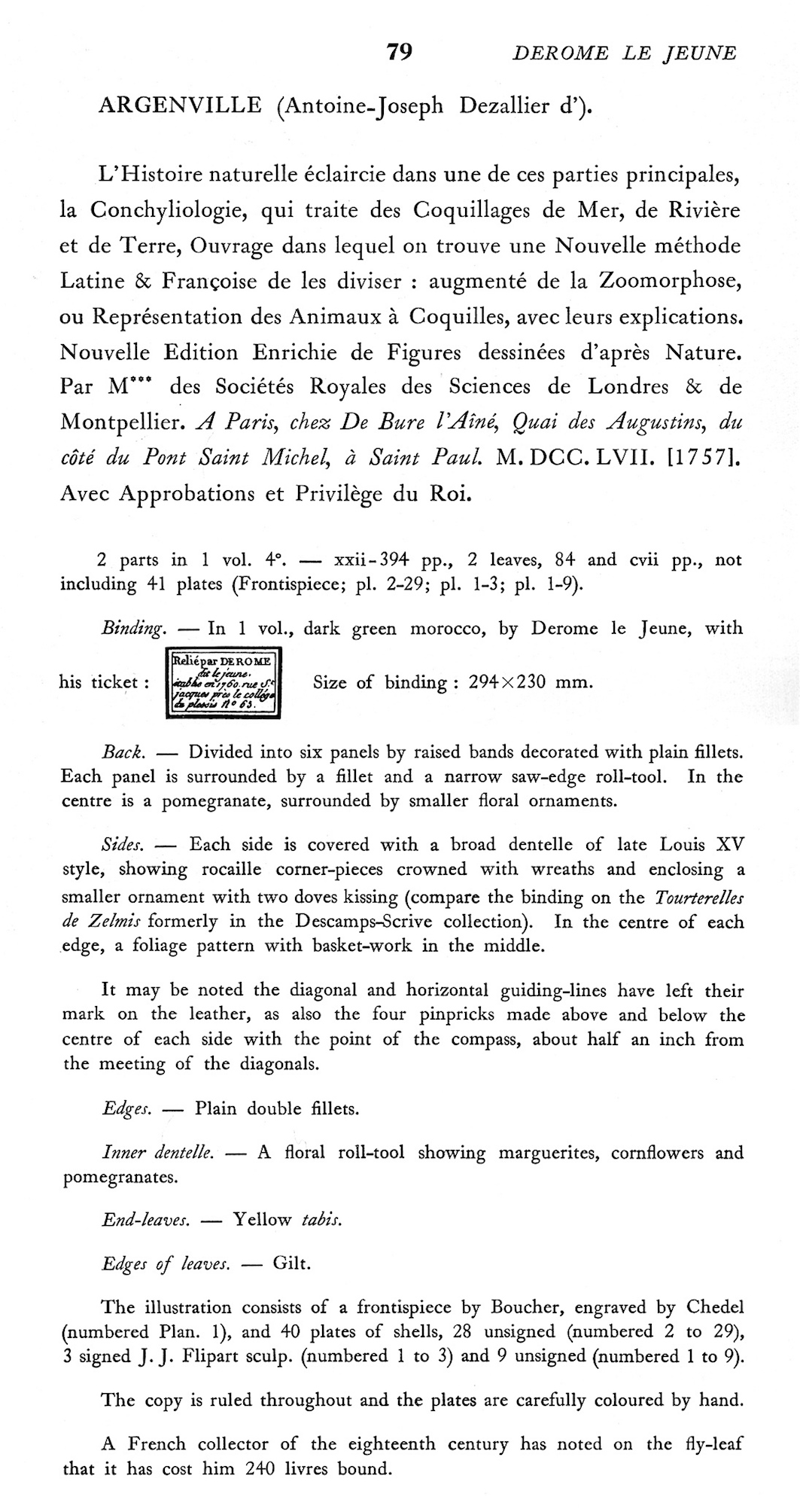
| The reproduction of the binding shown above is found in the 1935 publication: French signed bindings in the Mortimer L. Schiff Collection. With: British and miscellaneous signed bindings in the Mortimer L. Schiff Collection. By Seymour de Ricci. In 4 volumes. Published by New York, MCMXXXV (privately printed), (Printed in France by Lecram-Servant, Paris), 1935. This very expensive book is not without some obvious defects, I suppose it didn't strike De Ricci as odd that Derome le jeune was suddenly decorating his bindings with a whole different set of strange looking tools? De Ricci makes no mention of that fact in his detailed analysis. This same binding resurfaced in a 2015 Christies auction (click here to see it). I show the Christies Lot details for this item and they have an enlargment that is more than adequate to see that this is the very same binding, although they give slightly different dimensions (3 percent smaller) |
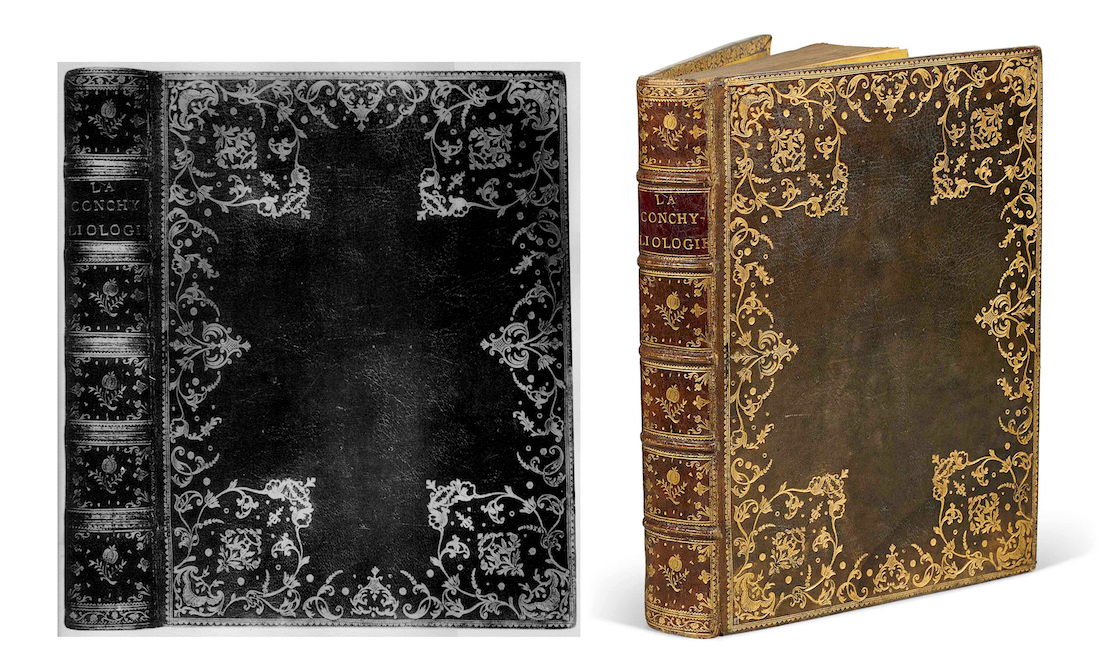
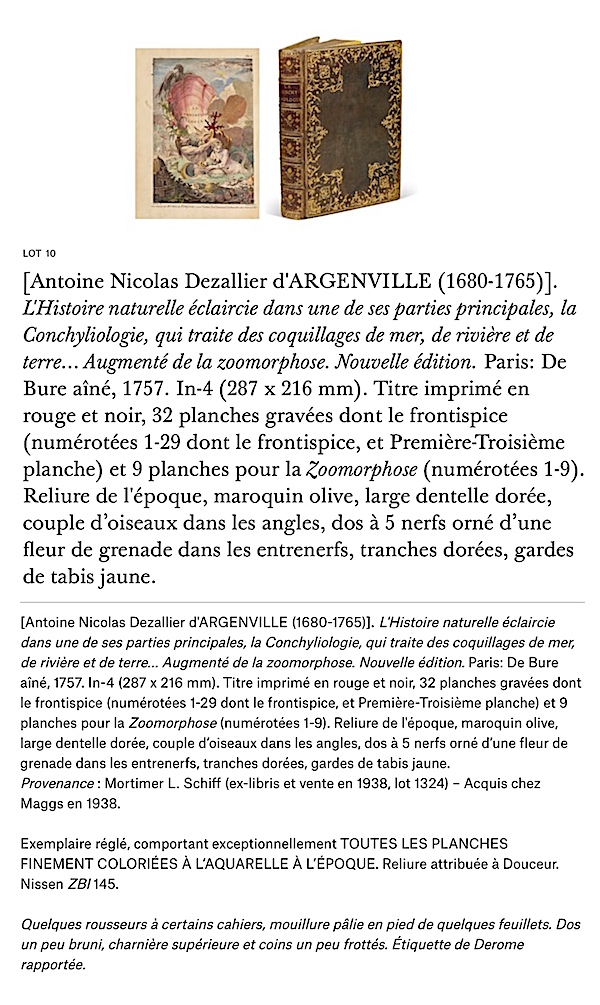
| At first I had serious doubt's about this binding however certain things appear to be correct, for example DCR 23 that we saw on the previous page, I show it below in Comparative Diagram 1, this is the same imprint, however I was very doubtfull at first as I extracted the larger version. I doubt whether I have seen this before, virtually this same kind of tool but a larger size used on the same binding. |
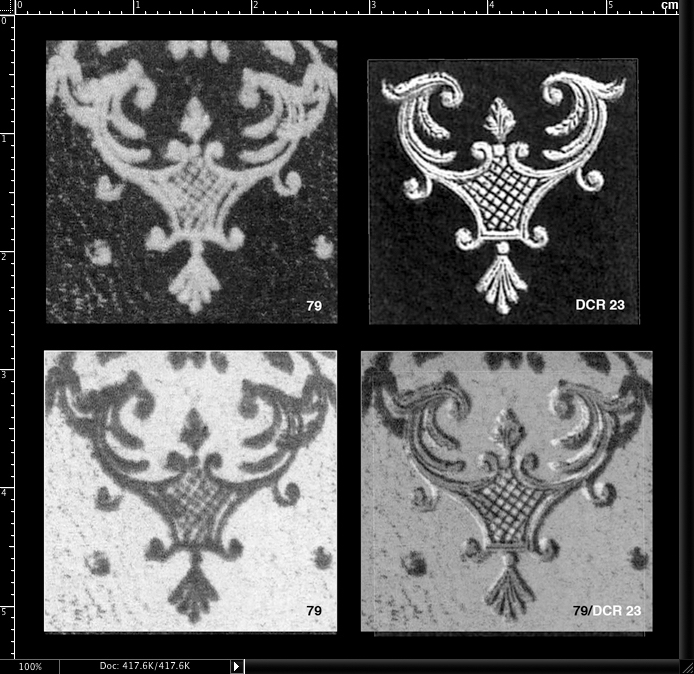
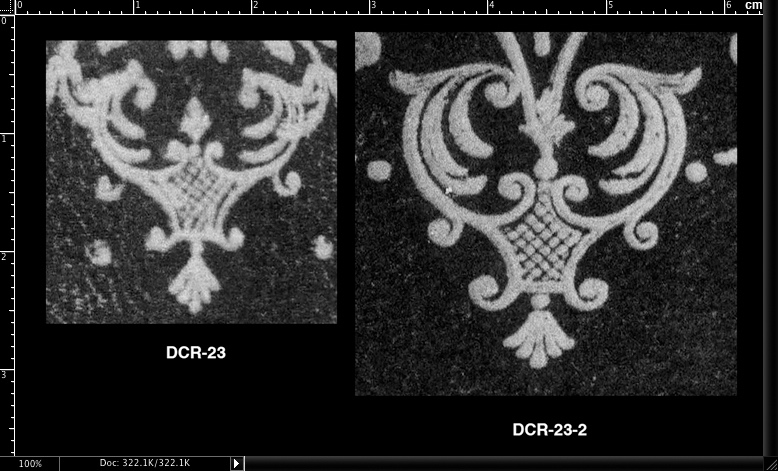
| In Comparative Diagram 3, shown below, I have assembled strips of roulette, no attempt has been made to align these strips, this roulette is so irregular that it will take a long while to find out where it stops or starts, however these strips have been taken from the last three important or possibly early bindings, and they appear to be very similar, as well as unusual. De Ricci has included a facsimile of the Derome ticket inside this binding, you will notice that it is a Type L 4, in the Pascal Ract-Madoux classification of Derome le jeune tickets, this is the last ticket Derome ever used and would date to 1789? The BnF binding RES-G-2972 maybe be earlier than 1760 to which they assign it, probably a study of the arms of Madame Pomadour might reveal a chronology that could change that date, while the present binding may in fact be from 1757. But I digress, the point I wanted to make is that these roulettes seem to indicate a strong possibility that De Ricci's No. 79 is another Fetil binding. |

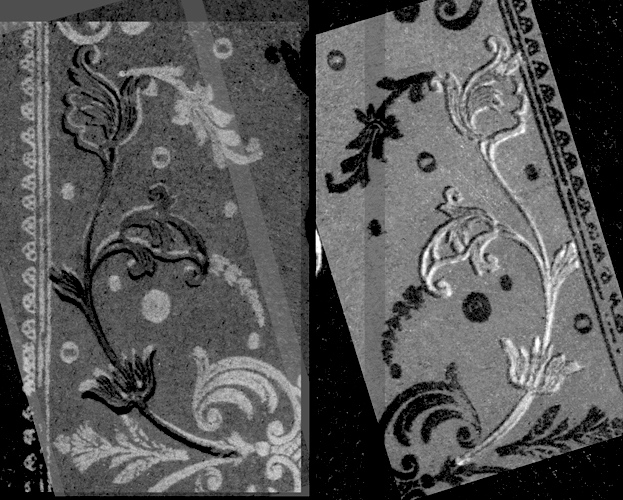
| In Comparative Diagram 1, we see that these imprints match up in the overlay experiments, a stunning result that surprised me, and proof that De Ricci measured this binding correctly. Even if some of the other imprints to not match any of our catalogued imprints we have solid proof that at least two are exact matches along with the roulette I think we can add this binding to the Fetil collection. |
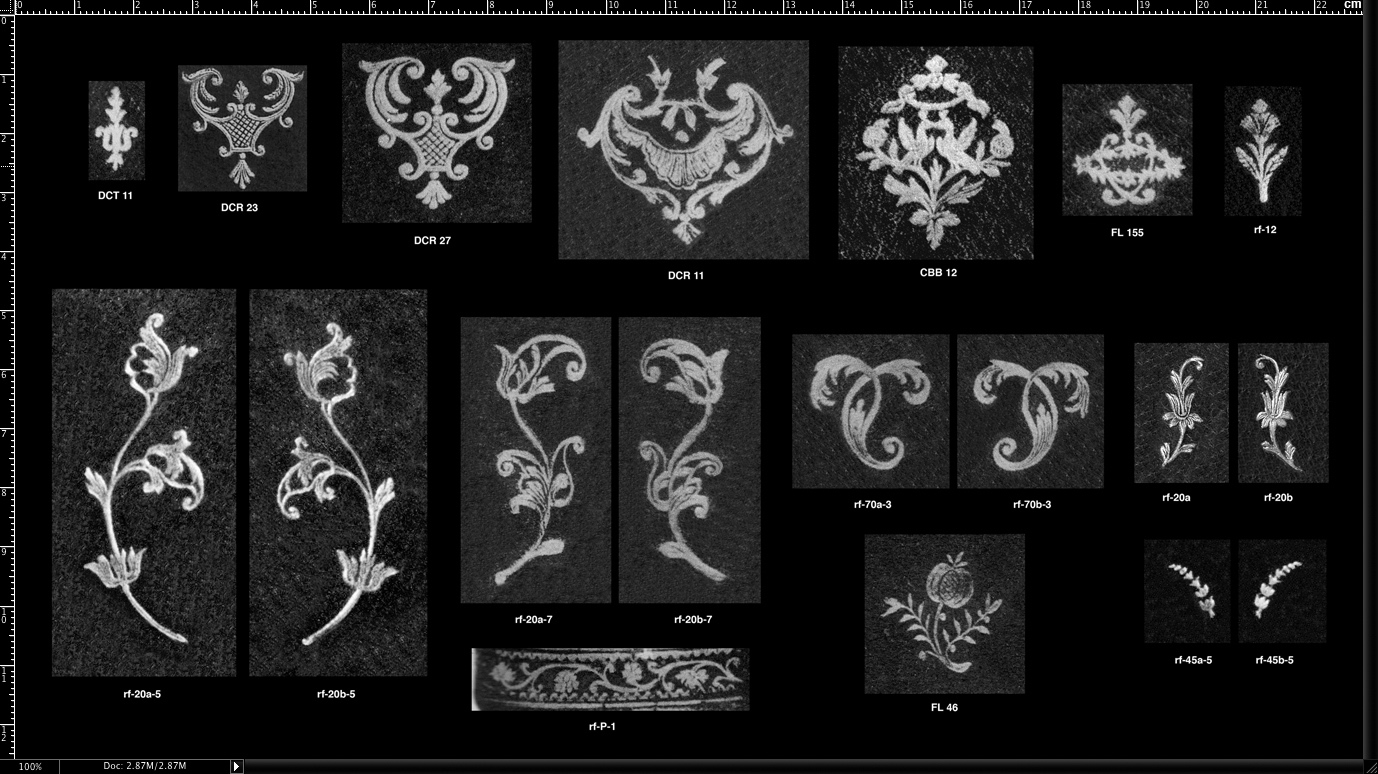
| While extracting the imprints from Seymour De Ricci's binding No. 79, to make Comparative Diagram 5, I made some amazing discoveries. Searching through Barber's tool catalogue to see if he had recorded any of the No. 79 imprints I found a number of matching imprints, these I will detail below. |
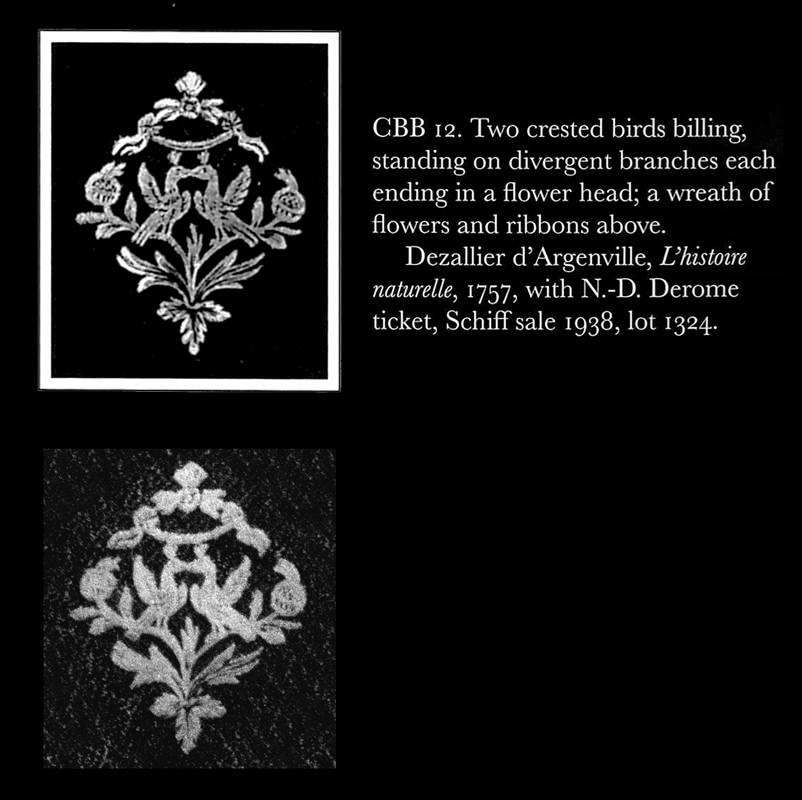
| In Comparative Diagram 6, I show Barber's CBB 12 model, it is shown in his tool catalogue with a frame around the illustration and this is the only one of his illustrations that I noticed with such a frame, the No. 79 imprint is identical except for size, so I take Barber's frame to indicate that size may be an issue, these imprints are the same there is little doubt of that and Barber's reference for this imprint is a shock. His reference is to the very volume that we are examining, however there is a positive side to this story which is that when I searched again for this reference on the internet, I discovered this same volume is for sale (click here to see it) from WP Watson Antiquarian Books London for 36.254 Euros... |
| "2 parts in one vol, 4to (289 x 215 mm), pp xxii 393 [1, blank]; 84 cvii [-cviii], with engraved frontispiece and 40 engraved plates, all in contemporary hand-colouring, sections with engraved headpieces; text ruled in red throughout, some occasional slight marginal spotting, a fine copy in contemporary olive morocco, elaborate rococo gilt panels featuring pairs of birds in the corners, spine with gilt panels with pomegranates, gilt edges, yellow silk pastedowns and endleaves, binder's ticket of Derome le jeune on front free endleaf.A special fine-paper deluxe copy with original hand-colouring and ruled in red of the first separate edition of the conchology. Dezallier's Conchyliologie previously appeared as one of two parts of his Histoire naturelle in 1742 (the second part being devoted to minerals and fossils), with only 29 plates. The two parts were then published separately, in enlarged editions, the Oryctologie, or fossils and minerals, in 1755 and the present work on shells in 1757.This special issue is printed on a different paper stock than the uncoloured issue; the text is ruled in red, and the plates finely coloured in water- and body-colours.The plates are numbered 1 - 29 (the frontispiece being plate 1), followed by three plates (Premier - Troisième), and nine numbered plates in the second section. The frontispiece is by Boucher, and engraved by Chedel. Each plate has a caption giving the name of the subscriber who paid for its production. It is likely that plates 2-29 were designed and drawn by Dezallier himself.Dezallier (1680-1765) was an arts connoisseur and artist, garden designer, and naturalist, and had studied engraving under Bernard Picart, painting with Roger de Piles, and architecture with Alexandre Le Blond. He served as secretary and later counsellor to the King. He amassed a famous cabinet des curiosités, which formed the basis of the present work. He was a fellow of the Royal Society and major contributor to the Encyclopédie.Provenance: ex-libris of Mortimer L. Schiff (1877-1931) and entry from the 1938 auction, lot 1324; bought by Maruice Burrus (1882-1959) from Maggs the same year, Nissen ZBI 145. N° de réf. du libraire 3994." |
| Here I should start a new page as the poor reader's head will be turning, this story gets more amazing by the minute... let us first look at the booksellers image of the titlepage... |
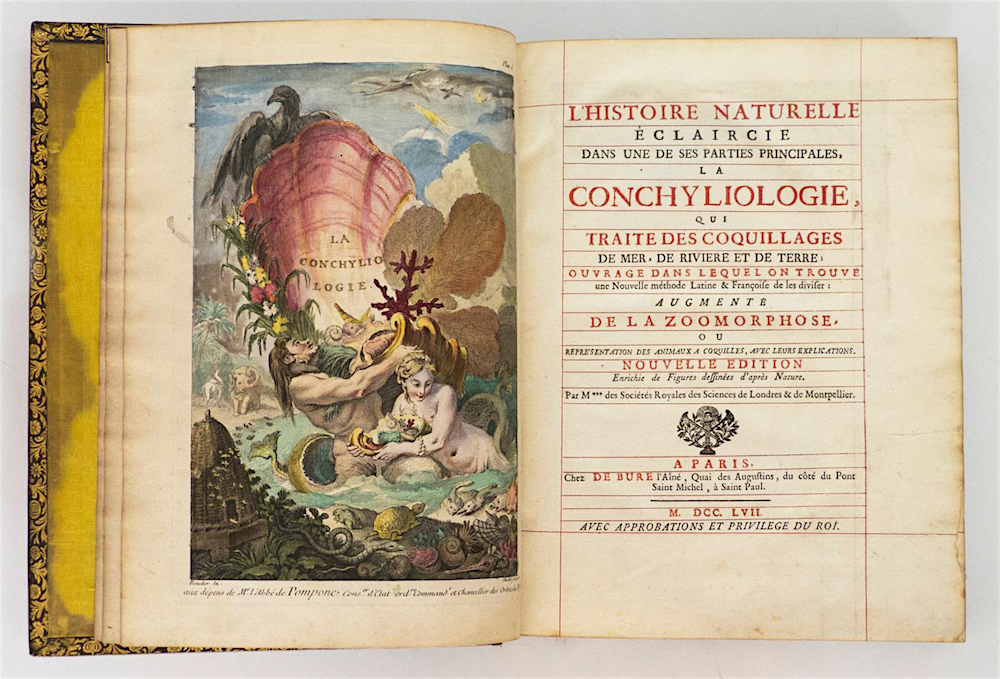
| L'Histoire naturelle eclaircie dans une de ses parties principales, la Conchyliologie, qui traite des coquillages de mer, de rivière et de terre . Augmenté de la zoomorphose . DEZALLIER d'ARGENVILLE, Antoine Joseph Edité par Paris, De Bure aîné, 1757 (1757) |
| Here we see what looks very much like a Douceur roulette used for the inner dentelle but is it? The best way to check this is to compare it with a well known Douceur like the BnF example RES-V-724. |
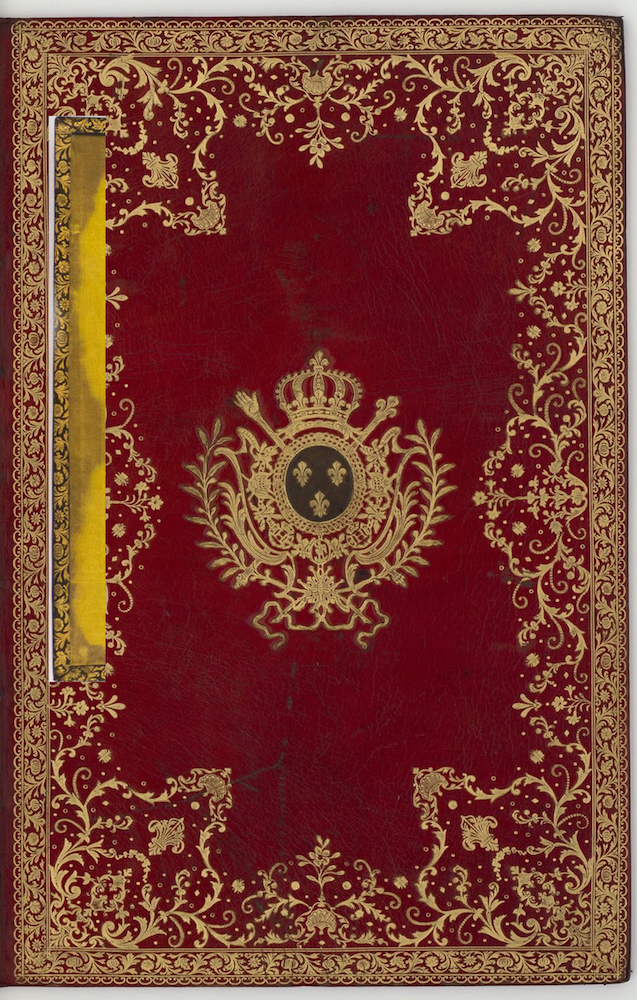
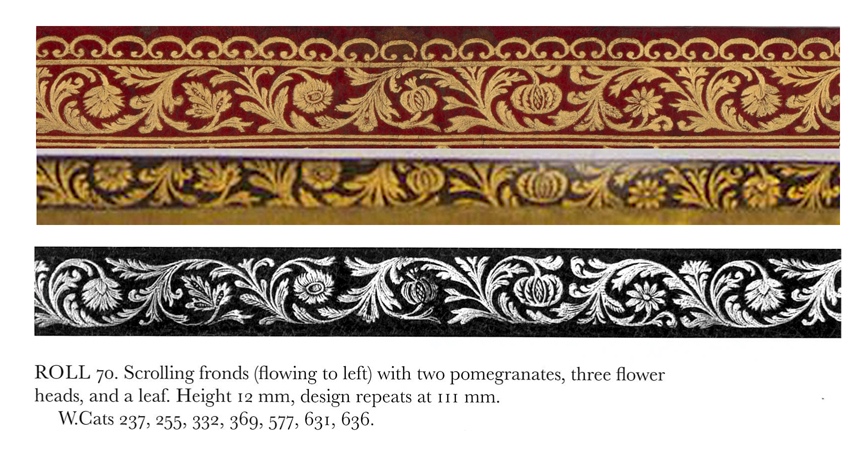
| Here we discover yet more mysteries, when I tried to compare the bookseller roulette it was too small, I had resized it to the dimensions that he gave (28.9 cm) however when I changed it to De Ricci's measurment (29.4 cm) it fit perfectly, this is the second time I have verified his measurement to be correct... but why is there a Douceur inner dentelle roulette inside this binding decorated by Fetil? As we suspect that Fetil has worked for Louis Douceur in the past, this is not really a surprise, however the Derome ticket remains an absolute mystery. At least we have verified Barber's ROLL 70 as a Douceur tool, and look how many examples he found... W.Cat 631 is included as well as W.Cat 636 which we have detailed on page 7. |
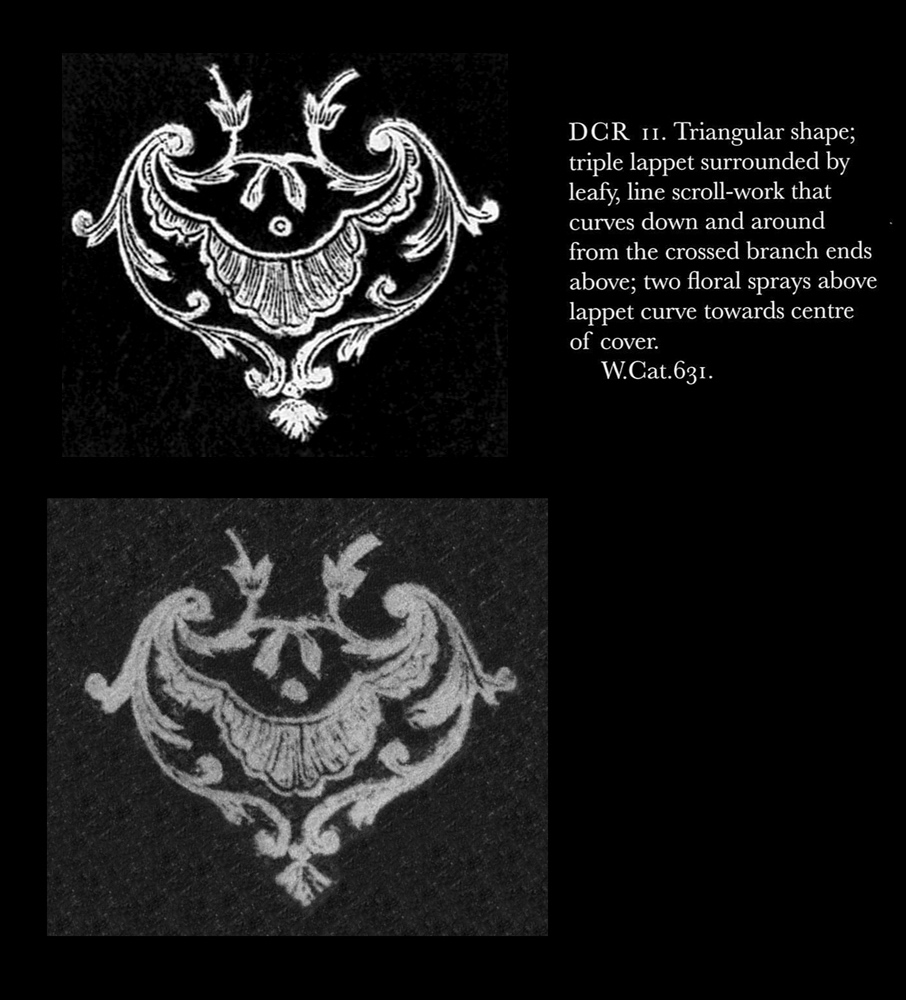
| In Comparative Diagram 9, we see another of Barbers's tools, DCR 11 is a match for this Fetil imprint. This imprint is so special that there can be no mistake in this match up, this is another direct hit on W.Cat. 631, we must find this binding. |
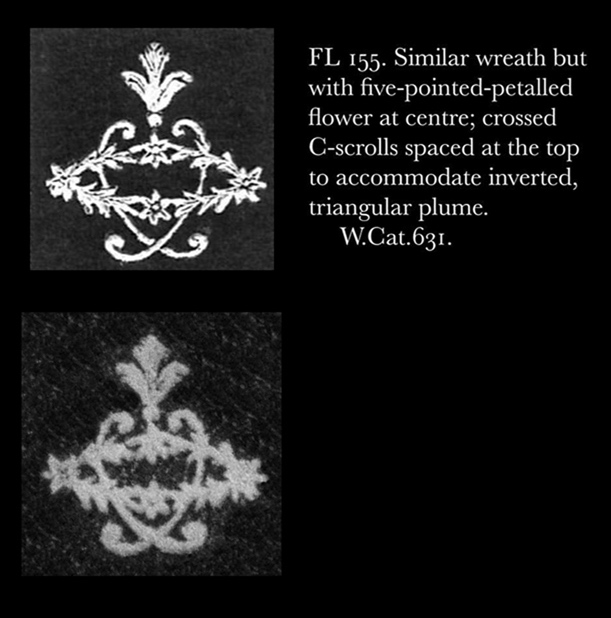
| In Comparative Diagram 10, yet another imprint link to W.Cat 631! and below in Comparative Diagram 11 we see that the spine centerpiece fleuron from Ricci 79 matches Barber's FL 46 with links to W.Cat. 486, 522, and 631 here are yet more leads in our search for Fetil bindings. |
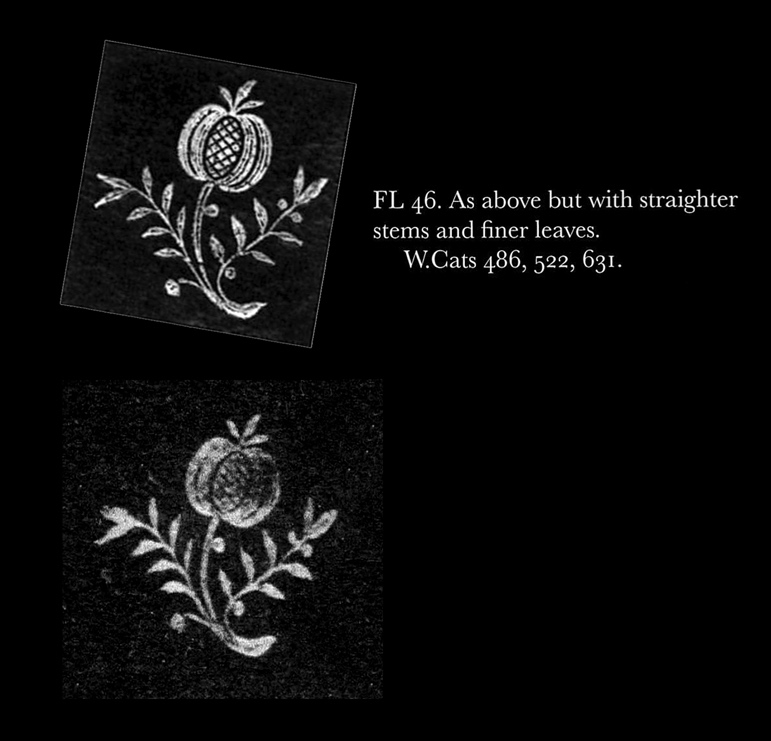
| In Comparative Diagram 12, we see that Barber's DCR 27 matches Ricci 79 and do not forget DCR 23 which was on the the binding of the previous page as well as here, it is also linked to binding W.Cat. 631, DCR 27 is simply a larger version of DCR 23. |
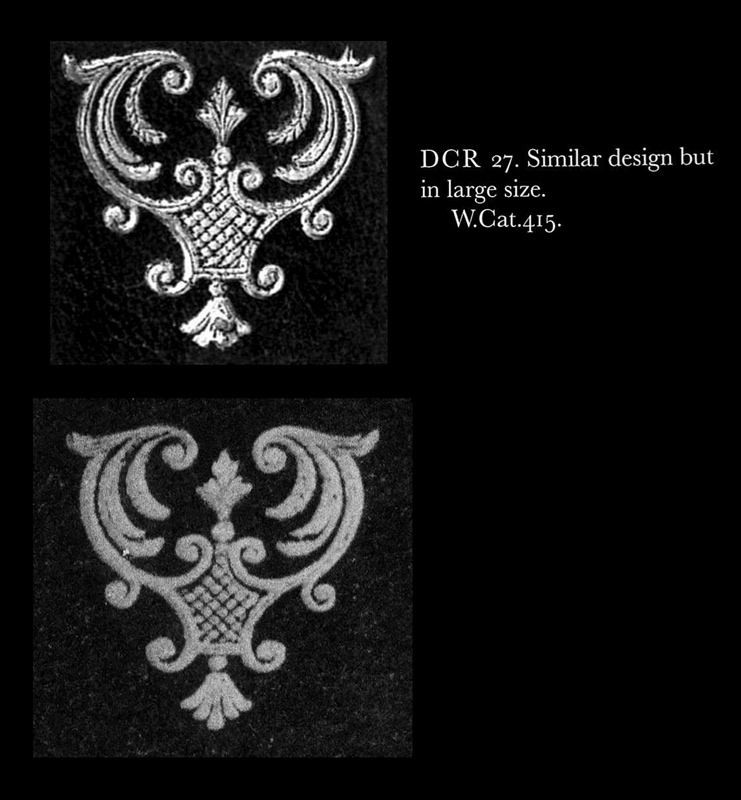
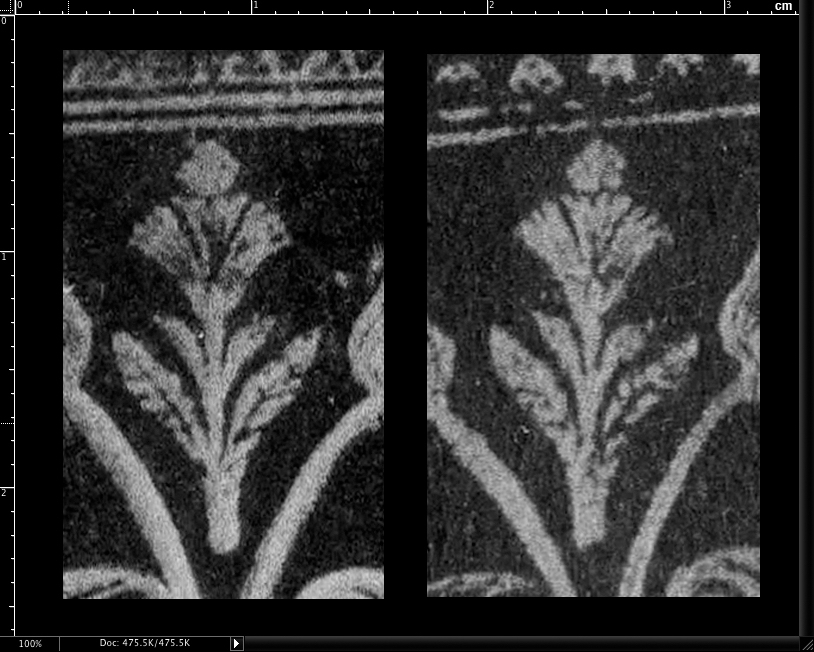
| This is more than enough for one page although I see now an imprint that I missed, lodged under the DCR 23s, I will include it below. At best this would only be a reconstruction of this imprint, that is obviously very similar to the Louis Chenu imprint LC-9. |
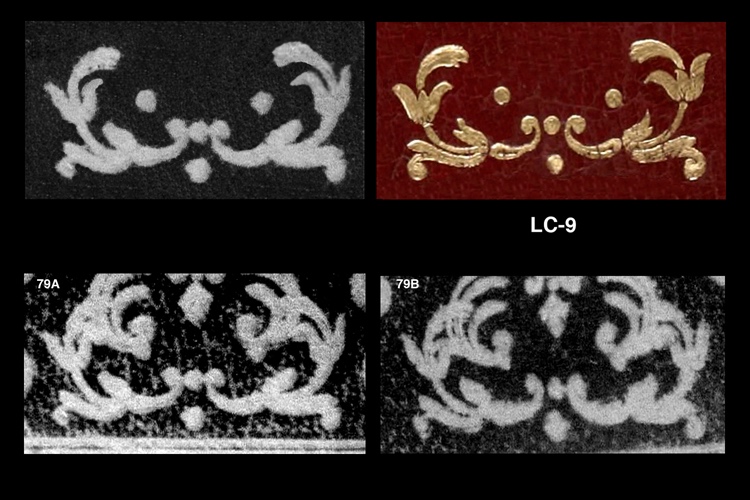
|
click here to return to the HOME page. click here to see an INDEX of the 2017 pages. see below links to previous work |
| Even experts are sometimes wrong, before you spend thousands on a book, please do your own research! Just because I say a certain binding can be attributed to le Maitre isn't any kind of guarantee, don't take my word for it, go a step further and get your own proof. In these pages I have provided you with a way of doing just that. |
| Virtual Bookings, created by L. A. Miller | return to the Home page of VIRTUAL BOOKBINDINGS |